 As some of you may know, I’m running my first Hardrock 100 starting on Friday. With the luxury of knowing many members of the “Hardrock family,” I reached out to them to learn what experience has taught them about the race. Their sharing is now all of our gain.
As some of you may know, I’m running my first Hardrock 100 starting on Friday. With the luxury of knowing many members of the “Hardrock family,” I reached out to them to learn what experience has taught them about the race. Their sharing is now all of our gain.
I hopes of getting their most helpful advice, I asked them two questions:
- What would you do differently than you did in your first Hardrock? AND
- If you could give a Hardrock runner only one piece of advice, what would it be?
Thanks to Troy Howard, Davis Horton, Scott Jaime, Garett Graubins, Darcy Piceu, Blake Wood, Billy Simpson, Mike Foote, Kirk Apt, Roch Horton, Julien Chorier, Karl Meltzer, Betsy Kalmeyer, Krissy Moehl, Dakota Jones, Scotty Mills, Andy Jones-Wilkins, Joe Grant, and Jared Campbell for their willingness to help out all future Hardrockers!
What would you do differently than you did in your first Hardrock?
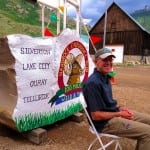
David Horton
David Horton (1992) — I’m not sure what I would have done differently at my first Hardrock. Going into the first Hardrock, we didn’t know if it was possible. We really, really didn’t know. We’d covered basically the whole course marking it and trying to find out where the course was. We saw it on the map, but then finding it… we’d covered basically the whole course and we thought, We’ve got to do all of that in one day? No way. You’ve got to be kidding. So I’m not so sure I’d have done anything differently. We trained on the course. I climbed lots of other mountains. I’d climbed some 14ers when I was up there. That’s what I always did for training, as well. I’m not sure I’d have done anything differently. I wish I would have known about the ginger. I learned that from Blake Wood years ago at Barkley. It’s better getting it that way. Nauseousness can be a real problem. Maybe what I learned, too, after the first one is eating more soup. Soup is so good. It’s such a good thing. Then winning the first two Hardrocks, I just feel honored and blessed to do that. The times weren’t… the competition wasn’t that great. We didn’t know if it was possible. I was able to beat everyone.

Kirk Apt
Kirk Apt (1992) — The one thing I would do differently is, I would try to finish. In ’92, I got to Sherman in reasonably good shape. I sat down, ate some soup, and commenced puking. Not your generic ultra-puke, where you feel bad for awhile, finally puke, feel a bit better and go on your way. No–I puked, and puked, and puked some more until I had nothing left to puke. Then I dry heaved, and dry heaved, and dry heaved some more. After several hours of this, I finally passed out for awhile, and woke up after daylight. I felt a bit wrung out, but somewhat better. But I had already surrendered my wristband sometime mid dry heave some hours before. In retrospect, I think I got clobbered by some fast and furious food poisoning bug. It would have been a long tough slog, but I think I still had time to finish had I not given up mid dry heave. Not saying it would have been the smartest thing to do, but I think I could have pulled it off. That remains my only 100-mile DNF. So, long-winded way of saying I wouldn’t have given up until I got timed out.

Blake Wood
Blake Wood (1994) — I had a pretty good run, but made a couple mistakes. First, I didn’t take good enough care of my feet, and they ended up pretty macerated. I actually didn’t completely solve this problem until about 4 or 5 years ago, so it is hard to blame myself for that one. Second, that was back in the dark ages before LED flashlights were invented, so I carried only a small two-AA flashlight out of Ouray toward Engineer Pass, and accidentally left my extra batteries behind. I ended up turning my flashlight off completely during the meadowy stretch above Engineer Aid station, and just hiked by starlight. This was spectacular–a clear, moonless night. I’d flip on my light for a couple seconds every minute or two to see where the next marker was. I had to walk most of the way down the road into Grouse Gulch, but might have done that anyway from fatigue.
Scotty Mills (1996) — I think the one thing I would’ve done differently for my first race would’ve been to run the first half of the race more conservatively. Even splits at HRH are nearly impossible to achieve, but having the discipline to run, hike, and walk within control in order to carry a better pace over the second half of the course would’ve resulted in a better performance for me.
Roch Horton (1999) — Carry less stuff.

Betsy Kalmeyer
Betsy Kalmeyer (1999) — I saw a runner up on a hillside above a creek bed and a very steep hill of willows. I was on the other side of the creek and above the creek bed on a very nice trail. My first thought was “oh my gosh, I must be off course” and so I descended and went over the creek and then climbed thru willows to try to get up there. About an hour later, in the middle of a huge willow patch, I looked down and saw other runners going the way I HAD been going and had to make my way back down to that very nice trail. What an idiot move! I guess my advice is–don’t just react, take some breathes, look around, check the situation AND your map, and take a few minutes if you can, to make a decision.
Karl Meltzer (2001) — I don’t know if I have an answer for that. When I first ran it, I was on gels, the same routine on crew. Nothing new. I went out a little competitive to start, and I did acclimatize that first year. But everything else was the same as I do now. I don’t look at “splits” now, I did then. Looking at splits is nonsense. It’s all about your effort level being comfortable. Hitting “splits,” especially aggressive ones sets us up for failure and going out too hard to hit the times. If you have a steady effort all day, you’ll do your best.
Jared Campbell (2004) — My first year I came out to the San Juan Mountains early and fell into the trap of thinking I should take it easy and not over-do-it prior to the
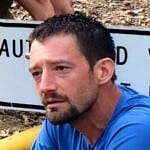
Jared Campbell
race. Nonsense! This is the conundrum of Hardrock for most folks, coming to a beautiful place and trying to sit still. I quickly learned that getting out every day makes me happier and going into Hardrock happier ALWAYS renders a better experience for the runner, their family, crew, and volunteers. Now, I don’t stress about doing too much or too little beforehand, I just get out, check out something beautiful every day and go into the race stress free.
Billy Simpson (2004) — What would I do differently? I would stop and smell more wildflowers and take in the more the sunset. (Or sunsets, depending)
Scott Jaime (2005) — I forgot to have fun. Seriously! I was in the most spectacular mountains that I’d ever seen and yet I never looked up because I was too afraid of what was ahead. I kinda felt sorry for myself that I was in so much pain and I just wanted it to be done. That does not make sense at all!
So my advice to first timers is to: 1. Stay in the moment. This race is a privilege and you will be seeing things that most of the world will never get an opportunity to see. 2. Start slower than you think. So many people start off way too fast and think they are well within their limits but elevation has an accumulative effect. 3. Get off high points quickly. The first year, Brian Fisher was pacing me and he noticed I became more bitchy and slow when approaching 12,000′, but once I was down the other side I became more chatty and positive. Do your best to get up and over quickly, don’t linger. 4. Have fun. Don’t worry about your time (unless you’re in jeopardy of making a cut off). Do not set a time goal your first attempt. Let the race just happen.
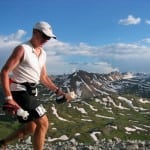
Garett Graubins
Garett Graubins (2005) — In my first Hardrock, I had grand aspirations. I was young and dumb then, as opposed to older and dumb now. I went out like gang-busters–it was one of the first years when there was a star-studded cast running for a win and I was out to prove that I belonged with that swift-footed group. I even convinced myself that if the stars aligned and people dropped in front of me, that I could sneak in and win the thing. Sheesh, I look back now and wonder how I deluded myself so badly. At any rate, I recall running parts of the first climb, hammering the first downhill into Cunningham, and racing through the aid station NASCAR-style. By the second big climb, the course was punching me repeatedly in the teeth. Somehow, I held on and cracked 32 hours that year–but I suffered big-time. From Virginius to the end, I was in a pretty dark place and I would not claim for a second that the race was fun that year.
Krissy Moehl (2007) — Ironically, my first attempt at Hardrock (2007) was my best. 2012 was my rough go. I wouldn’t run Western States before Hardrock again.
Julien Chorier (2009) — I was lucky because I think my first attempt has been good (in 2009). I tried to carefully analyze the key points of the race and I best prepare to face them. This seems to have worked.

Troy Howard
Troy Howard (2009) — I have two changes. The first is that I would focus more on eating solid food at the lower elevation aid stations–Sherman, Grouse, Ouray, and Telluride. Going over the high passes you just want to keep moving, eat food that can easily be absorbed like gels, and get down the other side. The second suggestion is tough for most of us to pull off, but I would have liked to see the entire course beforehand. I was able to see about 70 miles, but it was the 30 that I didn’t where it took me some time to find the right route.
Andy Jones-Wilkins (2009) — If I could do one thing differently I would would run Hardrock without running Western States 13 days before. But, other than that, I would also have done a bit more research on the course would have had a better race plan to take advantages of the “easier” sections (there aren’t very many but the few that there are are worth knowing about) and pacing carefully the VERY challenging sections.

Mike Foote
Mike Foote (2010) — I would have chilled out more. It’s a long slow 100 miles and there is no reason to get your manners in a bunch until later in the race when you need those energy reserves.
I would have studied up on the course map more. I spent a looong time on the road to Sherman aid station wondering if I was lost and running back and forth looking for markers.
I would have been born in a mountain hut high in the Himalaya and nurtured by mountain goats and snow leopards.

Darcy Piceu
Darcy Piceu (2010) — One of the potential “mistakes” I made was getting lazy hiking the uphills. As you know, it’s almost like a mountaineer’s race. There is so much hiking involved and I think that when I started to get tired, my climbing became really slow. After that experience in my first Hardrock, I decided to take on a new motto with hiking up… “hike with purpose.” Hike like you really mean it. I also started using poles in the years to follow and I think that also really helped me on the climbs. With poles you can get into a good rhythm on the climbs. As one of my pacers kept telling me….”tic doc, to the top!” (Helen Cospolich).
Dakota Jones (2011) — My first Hardrock was in 2011 and I simply wasn’t prepared for it. That was my second 100-miler and was so much bigger than I could have imagined. It rocked my world. I would have spent a lot more time running long in training. I did a lot of 3-hour runs, but not too many that were longer because I was working at the coffee shop and was young and thought that 3-hour runs were long. But now I know that the biggest thing about Hardrock is just being able to plow on for hour after hour through all levels of energy and fatigue, and that big days are really important (especially for a newbie to the sport, as I was). If you’ve been running for a long time and have finished many hundreds, you’ll be on top of this already. But it was a big learning experience for me.
Joe Grant (2011) — For my first Hardrock attempt, I didn’t have a chance to recce the course fully prior to the race. I took a few wrong turns which ended up costing me a couple of hours in happy wandering. In retrospect, making the time to come out earlier would have been valuable to acclimate and fully dial in the course.
If you could give a Hardrock runner only one piece of advice, what would it be?
Kirk Apt — The “one” piece of advice I would give a Hardrocker is be patient, look around, and be amazed, and savor the experience –on that day (and night, and next day, and night…) you’re one of the luckiest 152 people on the planet!!
Jared Campbell — Respect the course and approach it with humble reverence; however, also keep in mind that one small step at a time and just about anyone can finish.
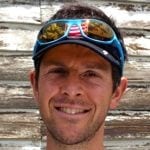
Julien Chorier
Julien Chorier — For me, one of the keys point to success is altitude acclimatization. It is very difficult to prepare in Europe. I think if you’re lucky enough to have a bib on this race, it is good to come 10 or 15 days before to recognize the course and get accustomed to running at over 3,000 meters (10,000′).
Mike Foote — I keep telling myself to let go and enjoy. And that this will bring me to my best possible performance. It’s the advice I’m giving myself, so I suppose its the advice I’d give anyone else.
Joe Grant — The best advice I got came the same year in 2011 from Roch Horton. It was a counterclockwise year and I was making my way up Virginius Pass (~70 miles in) feeling a little rough. Roch gave me a cup of soup and a pirogi and told me “Just do what you love, enjoy the mountains.” It was a pretty simple statement, but it really hit home. It’s sometimes easy to feel overwhelmed with racing or the challenge at hand, so I often remind myself of Roch’s words to work through a tough patch.
Garett Graubins — My golden advice… and it’s harder to follow than you would think… Start at a much slower pace than you think is reasonable. Swallow any ego, pride, and competitive notions. Trick yourself into going slowly–stop and take photos, hike at a pace that allows you to have a good conversation with a fellow runner, talk to the marmots. Focus only on conserving yourself from the very beginning. I did this in my most recent run and it became such an enjoyable experience as I had legs and a positive state of mind during the final third of the race. I think I was around 75th into Telluride (mile 28 in the clockwise direction) and wound up 25th or so at the end. Most importantly, I was smiling a lot more after the second sunrise than I ever thought possible!
David Horton — Since Horton can’t follow the rules and offered up 12 pieces of advice, jump below for David Horton’s Hardrock Tips.
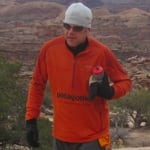
Roch Horton
Roch Horton — Find the balance between “Tough….Happy….Smart” and most of all “Respect.”
Troy Howard — You have 48 hours to finish, so overall time doesn’t really matter. Enjoy it, it isn’t a race. Don’t get discouraged by the challenges you’ll face, we all will face them. You are in the best mountains the U.S. has to offer, with amazing aid stations and race support to get you to the Hardrock.
Scott Jaime — Stay in the moment. Don’t think about what’s ahead and don’t think about how far you’ve gone. Those thoughts will keep you lingering at aid stations and question leaving. The aid stations are great, sometimes too great, and the thought of leaving will send shivers down your spine. You will always make your situation much worse than it really is and by the time you get to an aid station, you have decided to pull the plug. It has happened to me every year, but I somehow finish and it’s with the solitary thought of “I’ve put way too much time and effort into this and my family is here supporting me, I can’t let them down.” Besides, you may never get another chance to run Hardrock. Check out my blog post from 2010 when my son was the inspiration of me leaving. On the flip side, if you are bonking, don’t be afraid to sit down and take care of yourself. It’s certainly a double-edged sword, but I know for a fact that it never always gets worse if I slow down and take care of myself.
Dakota Jones — I don’t think I have much advice to give that’s anything new. The San Juans beat you up, no matter who you are, and after ten to twelve hours of running and hiking through them, the concept of “racing” becomes almost laughable. My best advice would be to just not stop. You may not be able to go very fast sometimes, but the simple act of continuing to walk forward, one step at a time, is huge. That’s what will get you to the finish. Remember that the cutoff is really far off, and whether you’re having the race you wanted or not (it’s always impossible to know until mid-race) you always have plenty of time to get to the finish. Sitting down is not going to help. Sleeping might, in some situations, but moving forward is crucial. Hardrock has always beaten me down so thoroughly that simply moving forward was all I could do, but it’s all you need to do. I feel like I have had pretty rough races there both times, but both of my finishes were on the podium. That always surprised me. You can do incredible things if you just don’t stop.
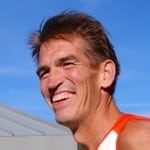
Andy Jones-Wilkins
Andy Jones-Wilkins — As for my one piece of advice it would all be about pacing. Particularly in the counterclockwise direction that you are running this year, the last two climbs can really bring a runners to their knees. My strong advice is to rest up (if that is at all possible after 20-plus hours on the trail) on the relatively gentle lower slopes of Grant-Swamp Pass, as when the climb begins in earnest, it’s steep, slippery, and relentless. If you are completely gassed here, this climb could literally take over an hour to cover less than a mile. Then, on Porcupine Pass after KT, be very careful not to take this for granted. While it is shorter than the previous big climbs, it is extremely steep (especially right out of the aid station) and, since it traverses open areas, route finding can be difficult (especially since you’ll have neon brain by now). Finally, the descent from Putnam should not be taken likely as it is rough and rocky. In short, I would strongly suggest you save something for the last 18 miles of the race. While in most 100s you might be smelling the barn at that point, at Hardrock you can’t really smell the barn until you cross South Mineral Creek with 2 miles to go.
Betsy Kalmeyer — As we get closer to the start, simplify your goal to just getting to the start, that’s what it comes down to–imagine/visualize it, be comfortable with it, enjoy it, and go from there.
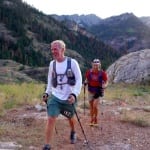
Scott Mills
Scotty Mills — As far as advice to a first time Hardrocker, I would echo my previous advice on pacing oneself. But I would add, that pre-race planning to include route study, equipment requirements, nourishment/hydration needs, and having pacers to accompany you are also very important priorities. Mental focus and tenacity with the ability to adjust to ever changing weather is also a necessity… sorry, that’s more than one piece of advice. :-)
Krissy Moehl — Like most 100 mile races, patience is key and even more important when considering this profile. Patience with yourself and patience with the course.
Karl Meltzer — Don’t carry more crap than you need. Other than a long sleeve and Houdini-style jacket with a small running hat is it. This is not a euro race. Find the spots to scoop water. I know them all. :-)

Billy Simpson
Darcy Piceu — One piece of advice I would give is… don’t take it TOO seriously. It’s just ultra running! ;-) If you’re not having fun, why do it? Constantly look around at the beauty and remind yourself why you’re doing what you’re doing!
Billy Simpson — One word of advice? Patience….
Blake Wood — Always carry a rain jacket, no matter what the weather looks like when you leave the aid station.
David Horton’s Top Ten Twelve Hardrock Tips
[Editor’s Note: Dr. Horton is a “special” individual. When you ask him for one piece of advice… well, he’ll give you ten. It kinda goes the same way with his running. Anyway, we’ll humor Horton and share all his advice. Oh, and for the record, 12 is a “Horton’s Ten” … kinda like a baker’s dozen.]
- The number one thing—don’t even count this one because it’s too late now—the number one thing is prepare for the altitude. It’s too late for people now. If you haven’t prepared for the altitude, it’s too late. What you’ve done in terms of your training with being out there, and you don’t necessarily have to be out on the course, but being out there and training in the mountains at that elevation, you can’t fake that. Of course, I’ve seen it work for a few people with respect to using altitude tents. So the number one thing, but you can’t do that, so I won’t even count that one.
- Limit your time in the aid stations. Hardrock aid stations are so easy to spend lots of time. If you have a crew, they should write down the time you come in the aid station, and you should talk about how long you plan to spend in the aid stations as well. I remember several years ago I had the record at 32 minutes for all the aid stations. I was real pleased with that. Then here comes along Karl [Meltzer] and he does 16 minutes at all the aid stations. 16 minutes—that is so quick. You can do that easily at one aid station. So, limit your time at aid stations.
- Eat lots of soup. I think soup is the best thing in the world in the 100 miler, and I think it’s the best thing in the world to eat on that course. It just goes down well, and you get salt in there. You need the salt. The salt in the soup makes you… and eat the chicken noodle soup and don’t eat the noodles, just eat the broth primarily because if you can eat the broth, it’s good. I think sometimes the noodles can actually make you nauseous whereas drinking the soup, that’s a good thing. So eat chicken noodle soup, and do it at every aid station.
- Don’t run the first few downhills too hard. It’s easy to just take off and fly. It feels so good. You finally got to the top of a mountain.
- I think the counterclockwise way you’re running it this year is the easier way mainly because the first half of the course running counter-clockwise, you stay up at a high elevation a lot, a whole lot. In the second half, you go up high but then you go down, you go up high but then you go down. That high elevation especially when you start getting above 13,000′ or 12,000′, it makes it really, really difficult. You really can’t change that much, but just be aware of that. The first half, I think, is harder because of the high elevation or that you’re staying at high elevation. That’s point number four.
- Make sure you have shoes that are big enough for the downhills. If there is any race that you need to make sure you have shoes that are long enough, this is one of them because you have such massive long downhills. Boy, if you have shoes that are just a tiny, tiny bit short, you’re just going to jam your toes into the shoes time after time after time and you have a good chance of getting some blood blisters and problems with that.
- You never think about this, but on super long downhills, there’s a tendency to run every step of the way. You need to think about taking care of your quads. Along with the other statement about not running the downhills too hard, this statement is walk some on the super long downhills. I did that at Hardrock, and I’ve done that at some of the other tough, tough races. Walk some on the super long downhills. Walk a little ways and when you do run, run gently.
- Consider using ginger root in your water bottle or in your pack. Go to the grocery store and buy real ginger, peel it, and put about a thumb size into your water bottle or into your water pack and you get more ginger that way than you do drinking ginger ale.
- Try not to use caffeinated drinks or caffeine until you really need it, until the latter part of the course, until you really feel like you need a boost, until you’re getting sleepy and you can’t stay awake. By the way, you should really limit your caffeine between now and race day. The more you limit it, the greater effect it’s going to have when you do use caffeine.
- Always carry a jacket. This is a course that, man, I tell you what, I learned the first year I ran it. I carried a jacket all night long and never had it on. Then I started climbing up Cunningham and I thought, Well, I guess I’d better carry it. Then a storm moved in and it started snowing and wind blowing and I thought, Man, I’m glad I brought this jacket. I put it on for a little while and then I went for about 20 minutes climbing and then I took it off. I thought, Well, I guess I should have brought it. Then it starts getting hot. Then before I got to the top it started snowing again. So always carry a jacket anytime you’re going up high. Basically anywhere on the course, carry a jacket whether it’s a Houdini (Patagonia) or something like a Torrentshell (Patagonia)—a heavier one, waterproof. Really consider that if there’s a chance of significant rain, carry more than a Houdini. The Houdini is the best jacket in the world for most races, but this race because of hail and heavy rain and the high elevations, you could need more than just a single layer jacket like a Houdini.
- Walk for awhile if you really become fatigued or nauseous or become sick. Walk for awhile especially after you’ve eaten quite a bit. Walk for awhile and let it settle down. Basically if you’re walking, you have greater blood flow to the stomach and you can digest it better than if you don’t or if you keep running hard. Especially if you eat a bunch at the top of a hill and then you take off flying down the hill, then boy you can have some problems there.
- Limit your mistakes. Limit your mistakes. You are going to make mistakes. That’s true in every race. You’ve got to limit those mistakes so they’re not significant. If you make a mistake, try to correct it as soon as you can. If you get behind something or behind pace or behind someone, don’t try to catch up all at once. Limit your mistakes. Consider that you are going to make mistakes. You’ve got to run your race. That’s part of the reason I think I had trouble at the Tour Divide [mountain bike race this year]. I started off too hard and I got with my buddy who is in too good of shape and younger and he’s just tearing it apart. Boy, when you start off too hard, it’s just such a mistake in the long stuff.
Other Fun Notes
David Horton — Hardrock is spectacular. Think about the privilege you have of doing that and of the time you’ve spent. If you have down periods, and you will have down periods, just get through it. Just get through it. Walk. Walk an extra amount. Think about, do I need to drink more? Do I need to eat more? The one thing I didn’t mention, too, if you ever feel nauseous for a long period of time, if you’ve eaten some food and drank some fluid and you’re sort of in good shape, what you should really think about doing then is to go for awhile and let it absorb. Then if you still stay nauseous, and I’ve done this at Leadville and in another race, I made myself throw up because after you throw up, you will feel better. But let things settle and let things absorb and give things a chance. But if you have to, then throw up and start back up with water and crackers. That’s another thing, too—crackers are really good to have, too, because there’s salt in them and they make you want to drink more. That’s a good thing.
[On not being at this year’s Hardrock] I would love to be there. I would love it. I show up at Western States and Hardrock as frequently as I can. I’d love to be there this time as well because it’s a special race. I tell you how special it is. If I were still running, and I’m going to start trying to run a little bit now, if I were still running or could still run, there are two events I’d go to—Hardrock and Barkley.
Troy Howard — 2009 was my first Hardrock. It is the reason we now live in Colorado.
Scott Jaime — My first HR was 2005 and I was scared like I’ve never been before! My wife made the comment to me on the start line “I’ve never seen you like this before a race…” My reply “I’ve never been so scared.” Truth be told, I had been in an avalanche in 2001 and broke my femur, so with all the snow at HR in 2005, I was nervous about going over Grant-Swamp and Virginius being snow packed, not to mention I’m afraid of heights. I honestly think being scared is a sign of respect in hopes that training was sufficient. I have never lined up at HR thinking I’ve done enough training but. It always has turned out out OK. As Dave Horton would say, “Pain is inevitable, suffering is optional.”
Krissy Moehl — Extras:
- Altitude, weather, and longer times between aid stations means more planning and preparation. It seems the more thoughtful and organized you can be going into this race (gear, crew, pacers, race plans, visualization), the better the outcome.
- Poles can benefit on the long climbs.
- Be prepared to hunker down in a storm (warm gear, extra fuel).
- Bright lights will help you better navigate at night; the Hardrock markers are metal tags that reflect the light. Sometimes, it’s easier to navigate at night than in daylight.
- The slower race pace (because of altitude) can allow you to eat more. Do it! Hopefully, the altitude doesn’t limit your appetite.
Call for Comments
- If you’ve run Hardrock before, how would you answer these two questions?
- If you haven’t run Hardrock, but hope to some day, what pieces of advice are you most apt to follow? [No pun intended.]
